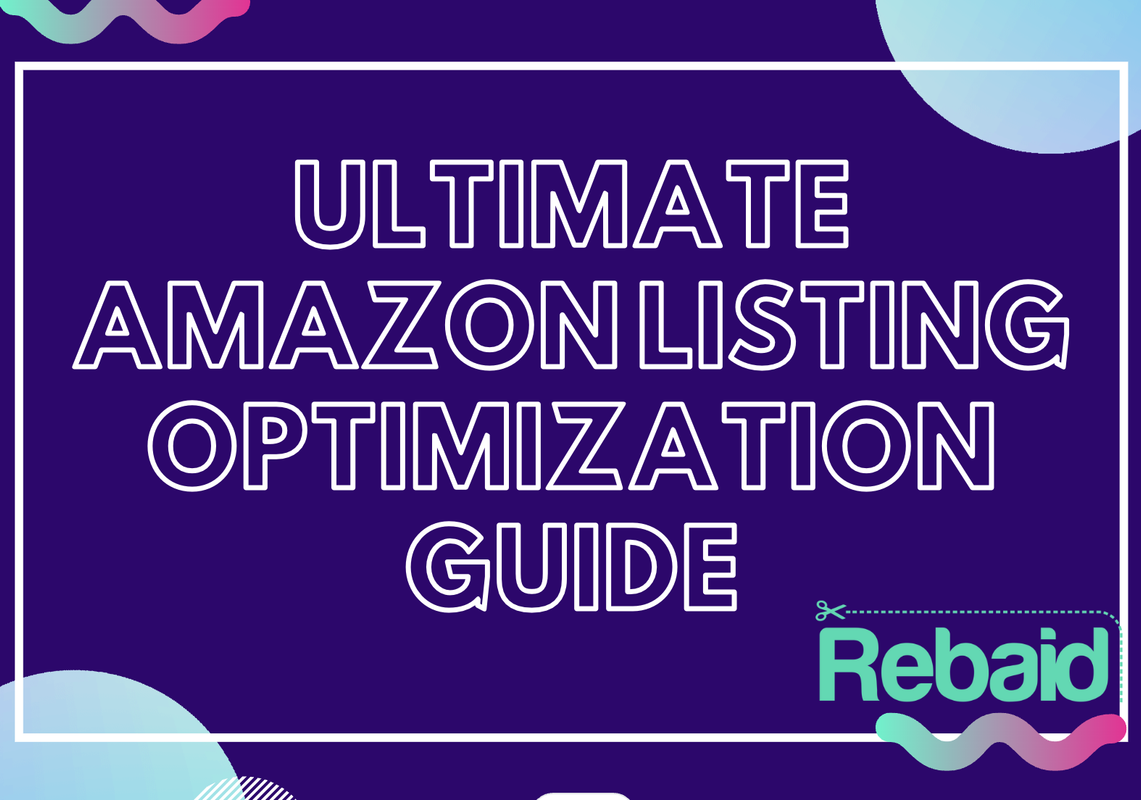
There are numerous examples of success on Amazon. But if you want to become a successful seller, you must understand Amazon listing optimization.
Amazon Listing Optimization is when you create your product listing to rank high on Amazon’s search engine. To start, you’ll need to understand the four components of listing optimization below.
The Four Main Components of Amazon Listing Optimization
You can break down the components of Amazon optimization into a four-step process:
None of these components work without each other. You can’t expect to do one and get results.
When you perform keyword research, it’s best to do so before selecting your products. Finding good keywords allows you to identify how many people are searching for your product. Knowing search count provides you with a good idea of well-selling products.
Keywords are what your customer types in the Amazon search bar to find their products. When finding the best keywords, you should focus on two areas:
Long-tail keywords, or those that are three or more, fulfill both needs. Long-tail keywords are more descriptive (pillows vs. blue memory foam pillows) and have fewer people searching for them. After all, there are more pillows in general than blue pillows.
To see this in action, use Amazon’s autocomplete search bar. See how typing the most basic description will automatically bring more detailed versions. Because this can be pretty time-consuming, you should use third-party tools.
The AMZScout Keyword Search tool, for example, allows you to filter by the following:
This combination of targets helps you narrow down keywords faster. Start by five thousand searches and reduce your numbers by increments of one thousand to get started. You can also use a similar ASIN Lookup tool to see what your competition is doing.
Once you have your list of keywords, you can start to write listing content effectively. Writing detailed and informative content for your listing provides three advantages:
Various content sections you need to worry about a break down into three areas:
The importance of product titles
The title is typically what most people first see when searching for your product. Titles should be fewer than 80 characters, including the brand and what the product is. You should also include your primary keyword, the most relevant keyword from your research above.
For example, Dr. Brown’s Baby Bottle listing includes the brand, primary keyword (baby bottle and nipple brush), and several deciding factors like the soft touch and sponge brushes.
Understanding bulleted lists
Bulleted lists are just below the title and provide further clarifying information. These might include your primary keyword (if appropriate) and often include secondary keywords.
The point of bulleted lists is to introduce how your product’s features solve your customer’s problems. Using Dr. Brown’s example from above, you see clarifying details, mentions of an easy grip, and BPA-free plastic.
How to look at the product description
The product description is similar to the bulleted list but with more text room. The description has just as many opportunities as the bulleted list for keywords. However, this area is viewed less often because it requires scrolling, something people don’t always do.
There are a few approaches to creating a product description. However, you’ll find that your goal is the same: to eliminate any reasons a customer refuses your product. Like this long sleeve shirt, clothing gives us excellent examples of this practice in action.
From the shirt listing, you’ll see images, sizing breakdowns, and washing details. So ask yourself to come up with 20 reasons why someone should or shouldn’t buy your product. This provides you with a firm foundation for product descriptions.
Product images are just as important as titles, as they are often the second or first thing your customer will see. But to do so effectively, you should follow Amazon’s guidelines.
First, your primary product image needs to be a high-definition photo with a white background. Most basic products have the same requirements.
Secondary product images should include some (or all) of the following:
This camping tent from Clays provides an excellent example of most of these in action. The combination of text and images boosts engagement and addresses people’s needs. Pay particular attention to the “one tree planted for every tree” image, which helps the company’s brand image.
If you sell clothing, the rules for product images will change for you. Seeing what your competition does with their pictures can often help you with where to start.
When you want to boost your conversion rates, social proof helps. On Amazon, the greatest form of social proof is positive customer reviews.
The ratio of positive to negative reviews can make or break your business. But getting those positive reviews can be tricky, as Amazon has particular rules about asking for reviews. Here’s a shortlist of those:
So, how do you ask for reviews? Typically, the best way to do so is by asking your customer and thanking them for using a product insert.
A product insert often includes either discounts or thank-you cards for their business. Having them (with no incentives) boosts your chances of a response. Amazon will recognize you as a quality product provider with more positive reviews.
Conclusion
Amazon Listing Optimization is a multi-tiered process to help increase your product sales. By creating the best listing, you tell Amazon that your product is worth buying. Customers will also see your effort, ensuring you remain at the top of search results for your desired keywords.
Just be sure to go through all four processes. If you skip one, you won’t get the results you expect.